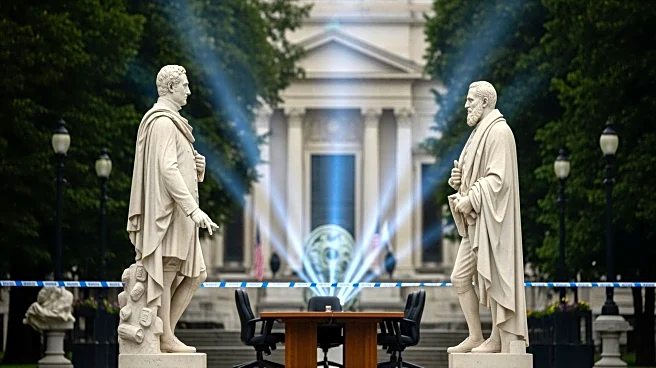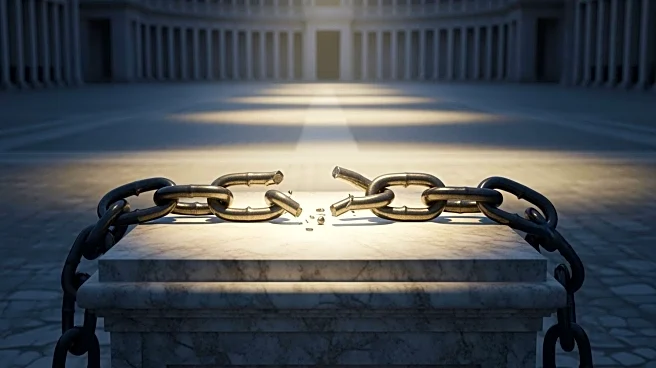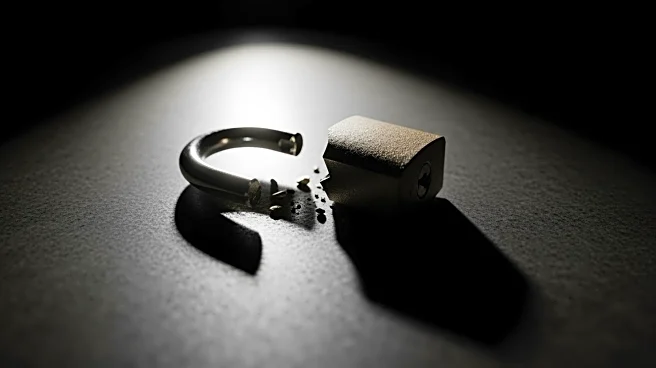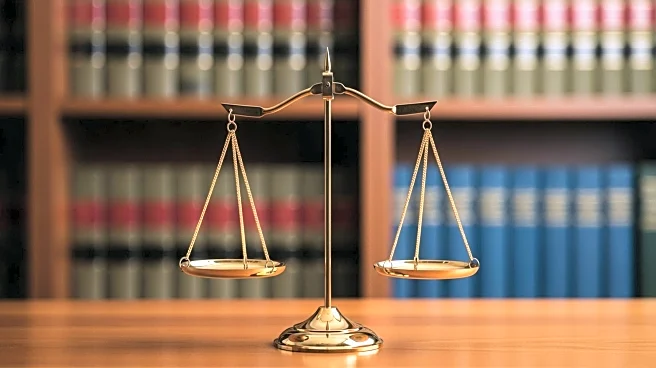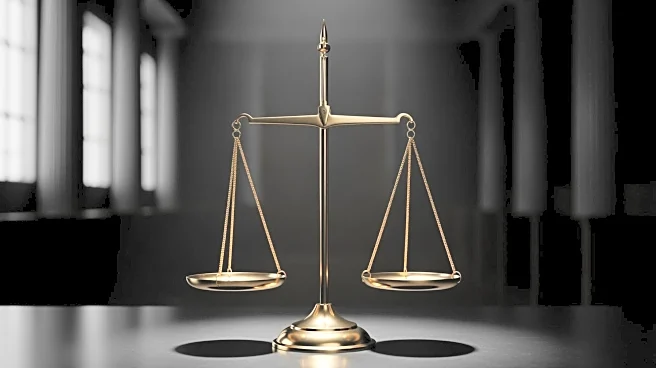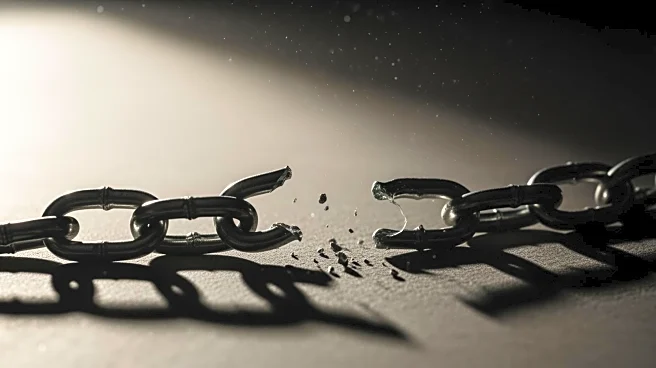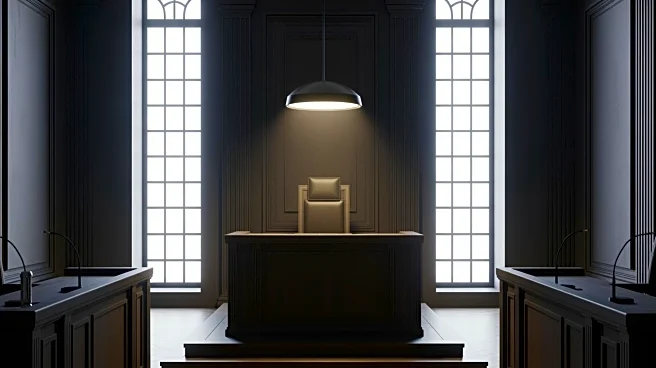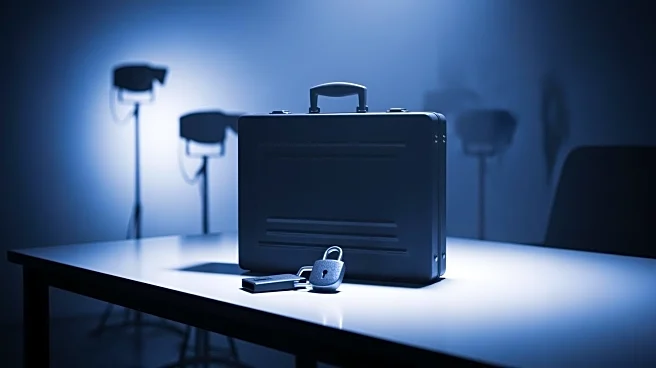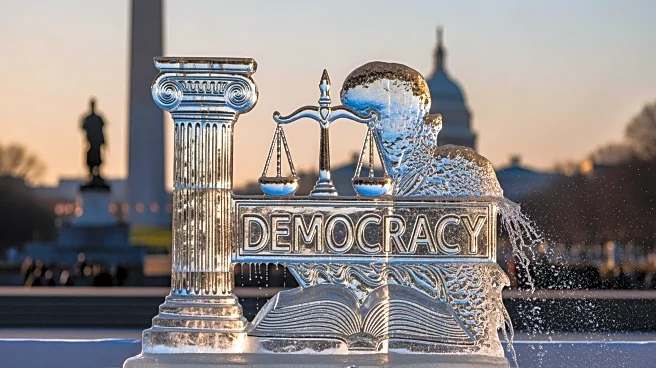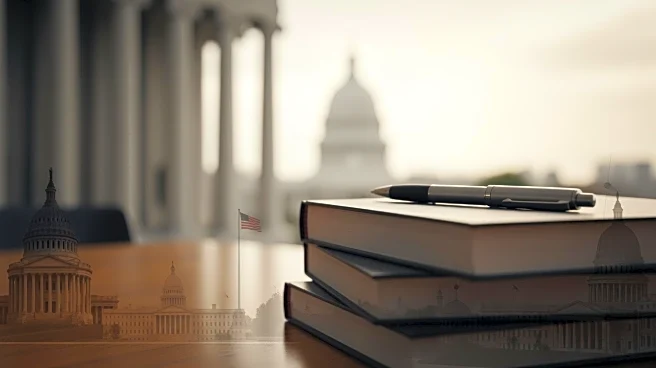What's Happening?
A group known as 'The Secret Handshake Project' has installed statues of President Trump and Jeffrey Epstein on the National Mall in Washington D.C. The statues, which depict the two figures holding hands,
were placed to coincide with 'Friendship Month' and appear to critique the former relationship between Trump and Epstein. The installation includes a plaque referencing a letter allegedly written by Trump for Epstein's 50th birthday, which has been a point of controversy. Trump has denied the authenticity of the letter and has filed a defamation lawsuit against the Wall Street Journal for reporting on it. The statues were strategically placed to face the Washington Monument, adding a layer of symbolism to the installation.
Why It's Important?
This art installation serves as a provocative commentary on President Trump's past association with Jeffrey Epstein, a convicted sex offender. The timing and location of the statues suggest a deliberate attempt to spark public discourse on the nature of their relationship and the broader implications of political and social alliances. The controversy surrounding the alleged birthday letter and Trump's subsequent lawsuit against the Wall Street Journal highlights ongoing tensions between the media and political figures. This event underscores the power of art as a medium for political expression and its potential to influence public perception and dialogue.
What's Next?
The installation is likely to provoke reactions from various stakeholders, including political leaders, media outlets, and the public. The defamation lawsuit filed by Trump against the Wall Street Journal is ongoing, and its outcome could have significant implications for media freedom and the legal boundaries of defamation. Additionally, the installation may prompt further artistic and activist responses, potentially leading to increased scrutiny of past associations and their impact on current political narratives.
Beyond the Headlines
The installation raises questions about the ethical responsibilities of public figures and the role of art in political critique. It challenges viewers to consider the complexities of personal and professional relationships in the public sphere and the ways in which these relationships are leveraged or scrutinized. The use of public space for such installations also highlights the intersection of art, politics, and public discourse, encouraging a broader conversation about accountability and transparency.
